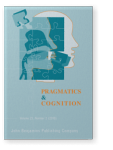Vol. 25:2 (2018) ► pp.310–336
Studying characterization in Arthur Miller’s The Crucible
A cognitive stylistic analysis
Apart from the stylistic and cognitive studies which have already been done separately on Miller’s The Crucible, this paper provides a new insight into the play and its system of characterization by integrating these approaches. To this end, the paper draws on Jonathan Culpeper’s cognitive stylistic theory of top-down and bottom-up processes in literary text comprehension and characterization. Based on this holistic framework, the paper takes advantage of such stylistic tools as speech acts, the Cooperative Principle and politeness theory to examine features of the language used by the characters Proctor and Danforth. In this regard, the article assimilates those linguistic elements with the embedded schemata within the play. Consequently, the study reveals that Proctor’s complex characterization does not coincide with the readers’ schema and thus they form their impression of his character based on piecemeal integration. On the other hand, Danforth’s character reinforces the readers’ schema about a representative of the church discourse and thus they comprehend his character on the basis of confirmatory categorization. The paper concludes that while Proctor and Danforth have a passive existence in the text or in people’s minds, it is only in the interaction between their language and the readers’ minds that they come into existence.
Article outline
- 1.Introduction
- 2.Method
- 3.The dominant schemata in The Crucible
- 4.Examining characterization by integrating the mind and the text
- 4.1Extract 1
- 4.2Extract 2
- 4.3Extract 3
- 5.Conclusion
- Notes
-
References
